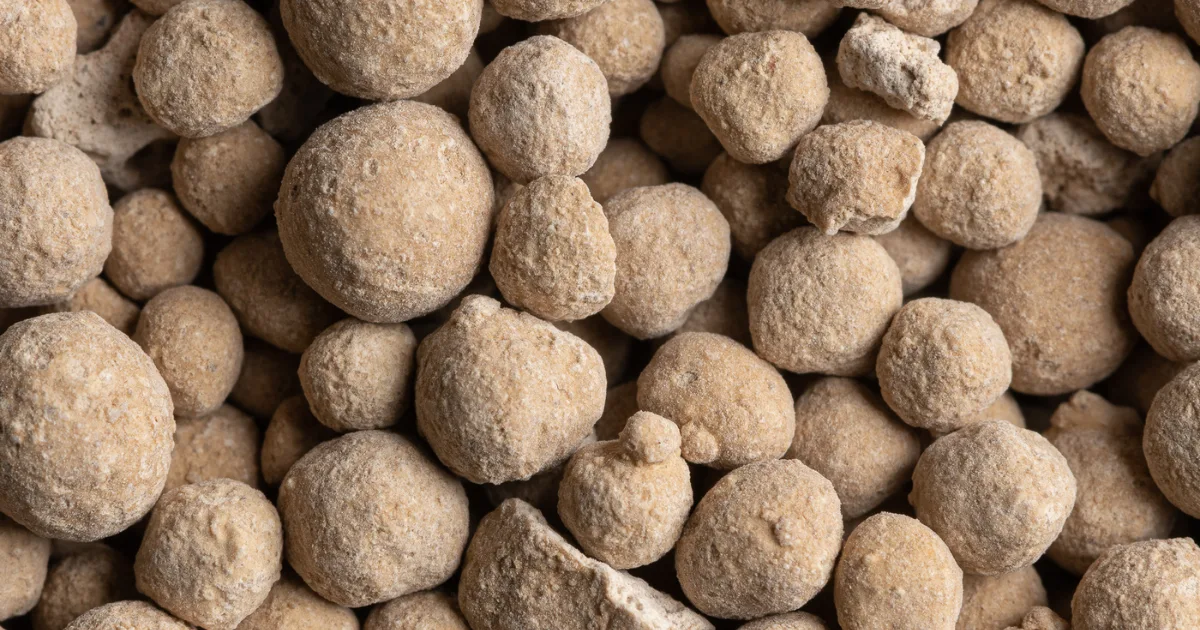Why recycled minerals are key to the circular economy
In today’s world, industries everywhere face mounting pressure to reduce waste, cut carbon emissions and protect finite natural resources. The circular economy offers a practical framework for meeting these challenges, and recycled minerals play an essential part in making it work. By keeping valuable materials in use for as long as possible, companies like us here at LKAB Minerals are helping customers acquire performance benefits while lowering environmental impact across multiple sectors.

Rethinking waste as a valuable resource
For decades, the dominant industrial model has been linear: extract raw materials, use them to manufacture products, and dispose of what’s left over. The result is significant waste, avoidable emissions and the depletion of finite resources. In contrast, the circular economy treats waste as a resource, and minerals are a perfect example of how this can be put into practice.
Many mineral-based by-products retain useful physical or chemical properties even after their initial industrial purpose has been served. Instead of sending them to landfills, these by-products can be refined, quality-controlled, and transformed into high-performance materials for new applications. This approach cuts down on the need for virgin extraction and dramatically reduces carbon emissions linked to mining and primary processing.
Turning by-products into high-performance materials
At LKAB Minerals, we supply a wide range of responsibly sourced minerals, and several of these show exactly how circular thinking can create real-world value. Ground Granulated Blast Furnace Slag (GGBS) is a well-known example. Produced from a by-product of the iron and steel industry, GGBS is processed into a fine powder that acts as a supplementary cementitious material. When blended with Ordinary Portland Cement (OPC), it enhances concrete durability, improves workability and lowers the embodied carbon of concrete structures.
By replacing 30-70% of OPC with GGBS, contractors and concrete producers can significantly cut the CO₂ footprint of their projects while meeting demanding performance standards. Bridges, tunnels, marine structures and large foundations all benefit from the extended service life and durability that GGBS provides. Turning what would otherwise be industrial waste into a valuable, technically proven building material.
Another standout example is MagnaDense, LKAB Minerals’ high-density aggregate made from natural magnetite. MagnaDense is used in applications ranging from concrete ballast for offshore wind foundations to radiation shielding in healthcare or nuclear projects. When these structures reach end-of-life or are decommissioned, MagnaDense can be recovered and reused in new projects without compromising quality, keeping the material circulating in the economy.
Recycling gypsum and other minerals
Gypsum is another mineral that demonstrates the principles of the circular economy in action. In addition to naturally mined gypsum, recovered gypsum from industrial processes, such as flue gas desulphurisation in power plants, can be used in plasterboard, cement production, and soil conditioning. Recovered gypsum reduces the need for new quarrying, minimises landfill waste and ensures a reliable, quality-controlled supply for construction and agricultural markets alike.

Other minerals, like Andricite, which LKAB Minerals provides for high-performance floor screeds, also support a more efficient use of resources. By optimising screed formulations, less material is wasted during installation, and buildings benefit from improved thermal performance and durability. Reducing repair, replacement and material use over the life of a building.
Keeping nutrients in circulation
Circular economy thinking isn’t just about construction – it applies equally to agriculture. Products like Calcifert are used to correct soil pH, balance nutrients and improve grass yield for livestock grazing or crop production. In many cases, these soil conditioners are made from industrial by-products that are carefully processed to meet strict agricultural standards.
Applying these minerals to land helps maintain healthy, productive soils, reduces the need for synthetic fertilisers, and prevents harmful soil acidification. This closed-loop approach connects industry and agriculture, turning what would be waste into a vital input for food production.
Supporting climate and sustainability goals
For businesses in construction, infrastructure, agriculture and industry, choosing recycled minerals is an effective way to meet climate commitments and demonstrate tangible sustainability improvements. For example, using GGBS instead of OPC can lower the embodied carbon of concrete by up to 70%, without sacrificing structural integrity or durability. Replacing virgin aggregates with high-quality recovered materials reduces pressure on natural habitats and minimises disruption caused by extraction activities.
This makes recycled minerals a practical, proven solution for clients and contractors working to meet stricter environmental standards, reduce waste sent to landfill, and build projects with greater lifecycle performance.
LKAB Minerals’ commitment to circularity
As an established supplier of industrial minerals, LKAB Minerals is committed to ensuring that every recycled or repurposed material meets the same high standards as our virgin products. We invest in careful sourcing, rigorous quality control and technical support to help customers get the best possible results from every project, from major civil engineering works to everyday agricultural improvements.
Our teams work closely with clients to help them choose the right recycled mineral for their needs, design mix formulations or soil treatment plans, and comply with British and European quality standards. Whether it’s a large infrastructure project using GGBS concrete, an offshore wind foundation ballasted with MagnaDense, or farmland rejuvenated with Calcifert, we help turn circular principles into practical outcomes that benefit people, businesses and the planet.

The future of recycled minerals
As global demand for environmentally responsible materials continues to grow, the role of recycled and repurposed minerals will only become more significant. Industries are under increasing pressure to report on carbon footprints, demonstrate resource efficiency, and adopt greener practices at every stage of production and construction.
Choosing by-product minerals is one of the simplest and most effective ways to contribute to a more circular economy, keeping valuable resources in use, cutting emissions, and delivering proven performance across applications.
Ready to make minerals part of your next project?
Explore our full range of mineral products or contact a member of our friendly team for guidance on how recycled and repurposed minerals can help you meet your performance and environmental responsibility goals. And don’t forget to follow us on LinkedIn for the latest updates, case studies, and product releases!




